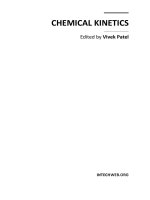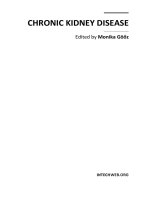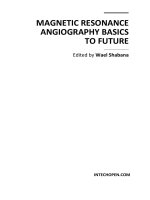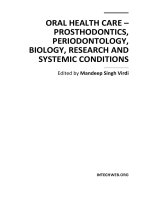Latest Research into Quality Control Edited by Isin Akyar potx
Bạn đang xem bản rút gọn của tài liệu. Xem và tải ngay bản đầy đủ của tài liệu tại đây (25.07 MB, 514 trang )
LATEST RESEARCH INTO
QUALITY CONTROL
Edited by Isin Akyar
Latest Research into Quality Control
/>Edited by Isin Akyar
Contributors
Sigrid Mennickent, Marta De Diego, Berta Schulz, Sunday Ameh, Alexandre Leal, Takuhiro Uto, Nguyen Huu Tung,
Yukihiro Shoyama, Hiroyuki Tanaka, Isin Akyar, Donald R. Love, Stella Lai, Renate Marquis-Nicholson, Chuan-Ching
Lan, Jonathan Skinner, Elba Lucia Cavalcanti Amorim, Valérium Castro, Joabe Melo, Tadeu José Da Silva Peixoto
Sobrinho, Allan Jonathan Cernicchiaro, Stephen Inkoom, Osamu Morinaga, Huck, Saskia Van Ruth, Edoardo Capuano,
Farzaneh Lotfipour, Somayeh Hallaj-Nezhadi, Bruna Chiari, Vera Isaac, Maria Gabriela José De Almeida, Marcos
Antonio Corręa, Giuseppe Vermiglio, Giuseppe Acri, Barbara Testagrossa, Federica Causa, Maria Giulia Tripepi, Hoa
Van Ba, Touseef Amna, Shihori Tanabe, Sun Ha Jee, Marcelo Gonzaga De Freitas Araujo, Tais Maria Bauab, Kung-Tien
Liu, Jian-Hua Zhao, Lee-Chung Men, Chien-Hsin Chen, Qian Sen, Zhu Xuemin, Rodrigo Catharino, Felipe Ravagnani,
Ana Faria, Daniel Saidemberg, Diogo Noin De Oliveira, Sabrina Sartor, Onur Karatuna
Published by InTech
Janeza Trdine 9, 51000 Rijeka, Croatia
Copyright © 2012 InTech
All chapters are Open Access distributed under the Creative Commons Attribution 3.0 license, which allows users to
download, copy and build upon published articles even for commercial purposes, as long as the author and publisher
are properly credited, which ensures maximum dissemination and a wider impact of our publications. After this work
has been published by InTech, authors have the right to republish it, in whole or part, in any publication of which they
are the author, and to make other personal use of the work. Any republication, referencing or personal use of the
work must explicitly identify the original source.
Notice
Statements and opinions expressed in the chapters are these of the individual contributors and not necessarily those
of the editors or publisher. No responsibility is accepted for the accuracy of information contained in the published
chapters. The publisher assumes no responsibility for any damage or injury to persons or property arising out of the
use of any materials, instructions, methods or ideas contained in the book.
Publishing Process Manager Iva Lipovic
Technical Editor InTech DTP team
Cover InTech Design team
First published December, 2012
Printed in Croatia
A free online edition of this book is available at www.intechopen.com
Additional hard copies can be obtained from
Latest Research into Quality Control, Edited by Isin Akyar
p. cm.
ISBN 978-953-51-0868-9
free online editions of InTech
Books and Journals can be found at
www.intechopen.com
Contents
Preface IX
Section 1 Quality Control of Herbal Medicine 1
Chapter 1 Quality Control of Rheum and Cassia Species by Immunological
Methods Using Monoclonal Antibodies Against
Sennosides 3
Osamu Morinaga and Yukihiro Shoyama
Chapter 2 Applications of Anti-natural Compound Immunoaffinity
Purification on Quality Control 29
Takuhiro Uto, Nguyen Huu Tung, Hiroyuki Tanaka and Yukihiro
Shoyama
Chapter 3 Standard Operating Procedures (SOP) for the
Spectrophotometric Determination of Phenolic Compounds
Contained in Plant Samples 47
Elba Lúcia Cavalcanti de Amorim, Valérium Thijan Nobre de
Almeida de Castro, Joabe Gomes de Melo, Allan Jonathan
Chernichiarro Corrêa and Tadeu José da Silva Peixoto Sobrinho
Chapter 4 Microbial Quality of Medicinal Plant Materials 67
Marcelo Gonzaga de Freitas Araújo and Taís Maria Bauab
Chapter 5 Application of ISO 9001 Industrial Standard to Herbal Drug
Regulation 83
Sunday Ameh, Florence Tarfa, Magaji Garba and Karniyus Gamaniel
Section 2 Quality Control in Food Science 109
Chapter 6 QA: Fraud Control for Foods and Other Biomaterials by Product
Fingerprinting 111
Edoardo Capuano and Saskia M. van Ruth
Chapter 7 Principle of Meat Aroma Flavors and Future Prospect 145
Hoa Van Ba, Inho Hwang, Dawoon Jeong and Amna Touseef
Chapter 8 Novel Analytical Tools for Quality Control in Food Science 177
Christian W. Huck
Section 3 Quality Control in Pharmaceutics 193
Chapter 9 Microbial Quality Concerns for Biopharmaceuticals 195
Farzaneh Lotfipour and Somayeh Hallaj-Nezhadi
Chapter 10 New Approachs in Drug Quality Control: Matrices and
Chemometrics 215
Sigrid Mennickent, M. de Diego, B. Schulz, M. Vega and C. G. Godoy
Chapter 11 Quality Control of Formulated Medicines 227
Alexandre S. Leal, Maria Ângela de B. C. Menezes, Ilza Dalmázio,
Fernanda P. Sepe, Tatiana C. B. Gomes, Amalia S. Santana, Luzia H.
da Cunha and Radojko Jaćimović
Section 4 Quality Control in Radiology and Clinical Imaging 243
Chapter 12 Quality Assurance in Diagnostic Medical Exposures in Ghana -
A Medical Physicist’s Perspective 245
Stephen Inkoom
Chapter 13 Quality by Design and Risk Assessment for
Radiopharmaceutical Manufacturing and Clinical Imaging 255
Kung-Tien Liu, Jian-Hua Zhao, Lee-Chung Men and Chien-Hsin
Chen
Chapter 14 Unified Procedures for Quality Controls in Analogue and
Digital Mammography 293
Barbara Testagrossa, Giuseppe Acri, Federica Causa, Raffaele
Novario, Maria Giulia Tripepi and Giuseppe Vermiglio
Section 5 Quality Control in Energy 317
Chapter 15 The Quality Management of The R&D in High Energy Physics
Detector 319
Xuemin Zhu and Sen Qian
ContentsVI
Section 6 Quality Control in Cosmetics 335
Chapter 16 Cosmetics’ Quality Control 337
Bruna Galdorfini Chiari, Maria Gabriela José de Almeida, Marcos
Antonio Corrêa and Vera Lucia Borges Isaac
Section 7 Sops: What Are They Good For? 365
Chapter 17 Standard Operating Procedures (What Are They
Good For ?) 367
Isin Akyar
Section 8 Quality Control in Clinical Laboratory Medicine 393
Chapter 18 Postmortem DNA: QC Considerations for Sequence and Dosage
Analysis of Genes Implicated in Long QT Syndrome 395
Stella Lai, Renate Marquis-Nicholson, Chuan-Ching Lan, Jennifer M.
Love, Elaine Doherty, Jonathan R. Skinner and Donald R. Love
Chapter 19 Quality Assurance in Antimicrobial Susceptibility Testing 413
Onur Karatuna
Chapter 20 The Investigation of Gene Regulation and Variation in Human
Cancers and Other Diseases 435
Shihori Tanabe and Sun Ha Jee
Chapter 21 Quality Control Considerations for Fluorescence In Situ
Hybridisation of Paraffin-Embedded Pathology Specimens in a
Diagnostic Laboratory Environment 469
Lisa Duffy, Liangtao Zhang, Donald R. Love and Alice M. George
Chapter 22 Quality Control of Biomarkers: From the Samples to Data
Interpretation 491
F. G. Ravagnani, D. M. Saidemberg, A. L. C. Faria, S. B. Sartor, D. N.
Oliveira and R. R. Catharino
Contents VII
Preface
Quality control has an emerging importance in every field of life. Quality control is a
process that is used to guarantee a certain level of quality in a product or service. It might
include whatever actions a business deems necessary to provide for the control and
verification of certain characteristics of a product or service. Most often, it involves
thoroughly examining and testing the quality of products or the results of services. The
basic goal of this process is to ensure that the products or services that are provided meet
specific requirements and characteristics, such as being dependable, satisfactory, safe and
fiscally sound. There are some standards which guarantee quality control. In those
standards you've got to document everything and track it. You should write what you do,
do what you write. Groups that engage in quality control typically have a team of workers
who focus on testing a certain number of products or observing services being done. The
goal of the quality control team is to identify products or services that do not meet a
company's specified standards of quality. If a problem is identified, the job of a quality
control team or professional might involve stopping production or service until the problem
has been corrected. Depending on the particular service or product as well as the type of
problem identified, production or services might not cease entirely. There should be well
organized procedures and management for ensuring quality control.
With the improvement of technology everyday we meet new and complicated devices and
methods in different fields. Quality control should be performed in all of those new
techniques.
In this book “Latest Research Into Quality Control” our aim was to collect information about
quality control in many different fields such as:
Quality Control in general: SOPs
Quality Control in Clinical Laboratory Medicine
Quality Control of Herbal Medicine
Quality Control in Food Science
Quality Control in Pharmaceutics
Quality Control in Radiology and Clinical Imaging
Quality Control in Energy
Quality Control in Cosmetics
The aim of this book is to share useful and practical knowledge about quality control in
several fields with the people who want to improve their knowledge.
Dr Isin Akyar
Acibadem University, School of Medicine,
Department of Medical Microbiology,
Istanbul, Turkey
PrefaceX
Section 1
Quality Control of Herbal Medicine
Chapter 1
Quality Control of Rheum and Cassia Species by
Immunological Methods Using Monoclonal Antibodies
Against Sennosides
Osamu Morinaga and Yukihiro Shoyama
Additional information is available at the end of the chapter
/>1. Introduction
Recently, medical usage of Japanese traditional medicine has been expanded by reaching ag‐
ing society and increasing various chronic diseases. Therefore, the demand of crude drugs
prescribed for Japanese traditional medicine has been increased. However, over 90% of
crude drugs are imported in our country, and those over 70% are supplied by the collection
of wild species. It is well known that the natural resources bring the difficulty of quality con‐
trol depending on collection season, cultivation place, a variety of species and so on. The
other problem, shortage of crude drug comes up. For these general environment, micropro‐
pagation and clonal propagation systems using tissue and cell culture were investigated in
this laboratry.
Sennoside A (SA) and B (SB) have the strong catharsis activity and contained in rhubarb and
senna (Figure 1) [1]. The concentration of sennosides in rhubarb and senna is variously
dependent on the genetic heterogeneity of species, differences in soil condition and climate
influence. Sennosides are metabolized by intestinal bacteria to rheinanthrone which acts in
the intestines as a direct purgatives [2, 3] and functions as similar to a natural prodrug (Figure
2). Despite the rising availability of a number of synthetic cathartics, sennoside- containing
prescriptions are still among the most widely used today, and their importance is increasing.
Rhubarb, the rhizome and root of Rheum spp. (Polygonaceae), is an important drug in tradi‐
tional Japanese herbal medicine as well as in western medicine since ancient times. It was
already recorded in Chinese Materia Medica 2000 years ago. It is used in many traditional Jap‐
anese herbal medicines prescribed with other herbal medicines for the syndrome of stasis of
blood, as an anti-inflammatory, sedative agent and as a stomachic. Furthermore, it is widely
© 2012 Morinaga and Shoyama; licensee InTech. This is an open access article distributed under the terms of
the Creative Commons Attribution License ( which permits
unrestricted use, distribution, and reproduction in any medium, provided the original work is properly cited.
used as cathartics in Japan. The main purgative principles of rhubarb have proved to be sen‐
nosides [1], identical with those isolated from senna leaves, and rheinosides, which were al‐
so isolated as purgatives of rhubarb, together with various kinds of phenolics, like tannins,
stilbenes, naphthalenes and lindleyin. The quality of rhubarb is severely regulated by Japa‐
nese Pharmacopeia as rhubarb contains SA of over 0.25% dry weight in root [4].
Figure 1. Structures of sennosides
Figure 2. Metabolic pathways of sennosides by intestinal bacteria.
Senna, the leaf and pod of Cassia spp. (Leguminosae), is one of the most popular in herbal
remedies and in health food industry. It has been widely used in cathartics for the relief of
constipation prescribed with other health teas and dieter’s teas in Japan, and often used as
natural dietary supplements for enhancement of bloodflow and metabolism in USA, Europe
and Australia. These pharmaceutical properties are due to sennosides, which are contained
Latest Research into Quality Control4
in Cassia acutifolia Delile and Cassia angustifolia Vahl. C. angustifolia listed in Japanese Phar‐
macopeia, and the quality is severely regulated as senna contains total sennosides (SA and
SB) of over 1.0% dry weight in leaf [4].
In the breeding research on the plant, a lot of stages are required as follows : dedifferentia‐
tion, extension of mutation by the mutagen, redifferentiation, analysis of the redifferentiated
plant, mass propagation of the higher yielding plant and transplanting to soil. Therefore, it
is very important to study a large number of plant samples in the phytochemical field and a
small sample size in vitro for the breeding of Rheum and Cassia species yielding high concen‐
tration of sennosides. Many analytical approaches have been investigated for the determina‐
tion of sennosides in plant extracts. Among these methods, the use of high-performance
liquid chromatography (HPLC) appears most frequently and widely today. However, when
the assay of very low concentration of sennosides in the regenerated plantlets is needed, the
HPLC method is not appropriate and efficient.
Recently, the immunological assay method is widely developed for the purpose of analysis
for a small amount of constituent. In general immunological methodologies in particular en‐
zyme-linked immunosorbent assay (ELISA) have promoted the development of higher sen‐
sitive assay system.
On the one hand, monoclonal antibodies (MAbs) have many potential uses in addition to
immunological methods in plant sciences. MAbs are superior to polyclonal antibodies
(PAbs) in the antigenic specificity and stability. Therefore, immunoassay using MAbs
against pharmacologically active compound having small molecular weight has become an
important tool for the studies on receptor binding analysis, enzyme assay and quantitative
and/or qualitative analytical techniques in plants owing to its specific affinity, and possesses
an extremely high possibility in the phytochemical analysis. Up to now, immunological ap‐
proach for assaying quantities of sennosides in C. angustifolia using PAb against SB has been
investigated by Atzorn et al [5]. However, since no success with MAbs against SA and SB
has been reported, objectives of this work are shown as following.
1. Production of MAb against SA, its characterization and use for ELISA.
2. Production of MAbs against SB, their characterization and use for ELISA.
3. Establishments of a new eastern blotting, double staining and immunohistochemical
staining using anti-SA and SB MAbs.
2. Production of MAb against SA, its characterization and use for ELISA
2.1. Preface
In the immunologically analytical methodology, there are two measuring methods using the
antiserum (polyclonal antibody ; PAb) and MAb in general. PAb is a heterogeneous mixture
of antibody molecules arising from a variety of constantly evolving B lymphocytes. There‐
fore, PAb can often show high affinity because different antibody populations react with the
Quality Control of Rheum and Cassia Species by Immunological Methods
/>5
variety of epitopes that characterize the antigen. On the other hand, there are some prob‐
lems of PAb that the extensive cross-reactivity occurs between the antibody and the multiple
antigens which have the same antigenic determinant, and it is impossible to supply for iden‐
tical antibody permanently. In the meantime, MAb is produced from a single B lymphocyte
and can react with one antigenic determinant of the specific antigen. Besides MAb has iden‐
tical specificity and affinity. There are some advantages that the complete purity of the im‐
munized antigen is not required and the hybridoma cells can be preserved as freeze stock,
and it is possible to get MAb depending on necessary respond.
There are several formats for ELISA like direct ELISA, competitive ELISA, sandwich ELI‐
SA and competitive ELISA according to the immune complexes formed during manipula‐
tion. Analysis of low molecular weight compound by immunoassay is still limited to
competitive format.
Quality control of the Japanese herbal medicine is necessary because it is believed that ap‐
proximately 70% of these crude drugs prescribed are collected from natural resource. Fur‐
thermore, since MAbs become necessary for the assay of concentrations of active
constituents in our on-going plant biotechnological projects, we have already produced
MAbs against natural compounds such as forskolin [6], solamargine [7], opium alkaloids [8],
marihuana compounds [9], glycyrrhizin [10], crocin [11], ginsenoside Rb1 [12] and Rg1 [13],
and developed individual competitive ELISAs. An immunological approach for assaying
quantities of sennosides using a PAbs has been investigated by Atzorn et al.[5]. However,
since no result of MAb related to sennosides has been reported yet, anti-SA MAb was pro‐
duced as described [14].
2.2. Experimental
2.2.1. Chemicals and immunochemicals
SA was purchased from Wako Pure Chemical Ind., Ltd. (Osaka, Japan). 1-Ethyl-3-(3'-dime‐
thylaminopropyl)-carbodiimide HCl (EDC) was purchased from Nacalai Tesque Inc. (Kyoto,
Japan). BSA and HSA were provided by Pierce (Rockford, IL, USA). Peroxidase-labeled anti-
mouse IgG was provided by Organon Teknika Cappel Products (West Chester, PA, USA).
Enriched RPMI1640-Dulbecco’s-Ham’s F12 (eRDF) medium and RD-1 additives (containing
9 μg/mL insulin, 20 μg/mL transferrin, 20 μM ethanolamine, 25 μM sodium selenite) were
purchased from Kyokuto Pharmaceutical Industrial Co., Ltd. (Tokyo, Japan). Hypoxanthine-
aminopterin-thymidine (HAT) additives were obtained from Sigma Chemical Company (St.
Louis, MO, USA). Fetal calf serum (FCS) was purchased from Cambrex Corporation (Wal‐
kersville, MA, USA). All other chemicals were standard commercial products of analytical
grade. Samples of various rhubarb roots were purchased from the Tochimototenkaido Cor‐
poration (Osaka, Japan).
Latest Research into Quality Control6
2.2.2. Extraction of various rhubarb samples
Dried samples (30 mg) of various rhubarb roots were powdered, and then extracted five
times with MeOH containing 0.1% (w/v) NH
4
OH (0.5 mL) with sonication, filtered using
a Cosmonice Filter W (0.45 μm Filter Unit, Nacalai Tesque Inc., Kyoto, Japan), and the
combined extracts were diluted with 10 mM NaHCO
3
to prepare a solution suitable for
the ELISA.
2.2.3. Synthesis of antigen conjugates
To SA (6 mg) dissolved in 1 mL of tetrahydrofuran-20 mM phosphate buffer of pH 5.5 (7:3),
0.3 mL of 20 mM phosphate buffer (pH 5.5) containing 6 mg of EDC was added. Then, 0.3
mL of 20 mM phosphate buffer (pH 5.5) containing 6 mg of BSA was added, with stirring at
room temperature for 14 hr. The reaction mixture was dialyzed five times against H
2
O, and
then lyophilized to give 5.8 mg of SA conjugate (SA-BSA). SA-HSA conjugate was also syn‐
thesized in the same manner.
2.2.4. Determination of hapten density in SA-carrier protein conjugate by matrix-assisted laser
desorption/ionization (MALDI)-time of flight (TOF) mass spectrometry
The hapten number in the SA-carrier protein conjugate was determined by MALDI-TOF
mass spectrometry as previously described [15]. A small amount (1-10 pmol) of antigen con‐
jugate was mixed with a 10
3
-fold molar excess of sinapinic acid in an aqueous solution con‐
taining 0.15% trifluoroacetic acid (TFA). The mixture was subjected to a JEOL Mass
Spectrometers (JMS) time-of-flight (TOF) mass monitor (model Voyager Elite, PerSeptive Bi‐
osystems Inc., Framingham, MA, USA) and irradiated with a N
2
laser (337 nm, 150 ns pulse).
The ions formed by each pulse were accelerated by a 20 kV potential into a 2.0 m evacuated
tube and detected using a compatible computer as previously reported [15].
2.2.5. Competitive ELISA for SA
SA-HSA (five molecules of SA per molecule of HSA) (100 μL, 1 μg/mL) dissolved in 50 mM
carbonate buffer (pH 9.6) was adsorbed to the wells of a 96-well immunoplate then treated
with 300 μL S-PBS for 1 hr to reduce non-specific adsorption. Fifty μL of various concentra‐
tions of SA or samples dissolved in 10 mM NaHCO
3
solution were incubated with 50 μL of
MAb solution (0.218 μg/mL) for 1 hr. The plate was washed three times with T-PBS, and
then incubated with 100 μL of a 1:1000 dilution of POD-labeled anti-mouse IgG for 1 hr. Af‐
ter washing the plate three times with T-PBS, 100 μL of substrate solution [0.1 M citrate buf‐
fer (pH 4) containing 0.003% H
2
O
2
and 0.3 mg/mL of ABTS] was added to each well and
incubated for 15 min. The absorbance was measured by a micro plate reader at 405 nm and
490 nm.
The cross-reactivities (CR) of sennosides and related compounds were determined as fol‐
lowing.
CR
(
%
)
=
μg
/
mL of SA yielding A
/
A
0
=50%
μg
/
mL of compound under investigation yielding A
/
A
0
= 50%
×100
Quality Control of Rheum and Cassia Species by Immunological Methods
/>7
where A is the absorbance in the presence of the test compound and A
0
is the absorbance in
the absence of the test compound.
2.3. Results and discussion
2.3.1. Direct determination of SA-carrier protein conjugate by MALDI-TOF mass spectrometry
In general, the low molecular weight compounds (hapten) like plant secondary metabolite
have no immunogenicity. Therefore, it should be conjugated with some high molecular
compound like protein resulting in immunogenic. The specificity of immunoassay method
is dependent on the site of linkage between hapten and carrier protein moiety, and enumer‐
ation of hapten in immunogen conjugate. SA-BSA and SA-HSA conjugates were synthesized
as immunogen and the immobilization antigen for ELISA, respectively. Figure 3 shows the
typical synthetic pathway of SA-BSA conjugate. The commonly used methods to link car‐
boxyl group and amino group in a hapten or carrier involve activation by carbodiimides,
isobutylchloroformate or carbonyldiimidazole. Carbodiimides react with carboxyl groups to
form an unstable O-acetylisourea intermediate, which reacts with amines to form amide
bonds. EDC can be used commonly as a carbodiimide. In this case, carrier protein combined
directly to antigen as indicated in Figure 3.
Figure 3. Typical synthetic pathway of SA-BSA. Carboxyl group of SA was activated by EDC and subsequently com‐
bined to amino residues of lysine and/or arginine on the protein to form amide bond.
Figure 4 shows the MALDI-TOF mass spectrum of the antigen, SA-BSA conjugate. A broad
peak coinciding with the conjugate of SA and BSA appeared from m/z 68,500 to 73,500 cen‐
tering at around m/z 70,600. Using experimental results and a molecular weight of 66,433 for
BSA, the calculated values of SA component (MW 862) are 4,218 resulting in the range of
two to eight molecules of SA (five on average) conjugated with BSA. In general eight to
twenty five molecules of hapten conjugated with carrier protein in the conjugate were suffi‐
cient for immunization. Therefore, the hapten number was estimated to be sufficient for im‐
munization because an antigen conjugate having a similar hapten number was sufficient for
immunization in a previous study [10]. The number of SA contained in the SA-HSA conju‐
gate was also determined to be around five molecules by its spectrum.
Latest Research into Quality Control8
Figure 4. Direct determination of SA-BSA by MALDI-TOF MS. [M+H]+, [M+2H]
2
+ are single and double protonated
molecules of SA-BSA, respectively.
2.3.2. Production and characteristic of MAb against SA
After the cell fusion and HAT selection, hybridoma producing MAb reactive to SA was ob‐
tained, and classfied into IgG
1
which had k light chains. Refined MAb was confirmed to be
IgG compared to the MALDI-TOF MS measurement. The molecular weight of MAb was
151,396 calculated [16]. The reactivity of IgG type MAb 6G8 was tested for varying the anti‐
body concentration and for performing a dilution curve in direct ELISA. The antibody con‐
centration of 0.218 μg/mL showed the absorbance at 0.8 in direct ELISA, therefore it was
selected for the competitive ELISA.
2.3.3. Assay sensitivity and assay specificity
The free MAb 6G8, following incubation with competing antigen, was bound to the poly‐
styrene microtitre plates precoated with SA-HSA. Under these conditions, the full measur‐
ing range of the assay extended from 20 to 200 ng/mL as indicated in Figure 5.
SA is a unique anthraquinone having individual double of carboxylic acid-, hydroxyl-, car‐
bonyl- and O-glucosyl-groups at C-3, C-1, C-9 and C-8 positions in a molecule, respective‐
ly. Moreover, SA possessed a threo- configuration between C-10 and C-10' positions as indicated
in Figure 6. Therefore, a MAb should detect all these functions, and also the stereochemical
recognition is needed for this complicated compound. Since the newly established ELISA
against SA is expected to be applied for phytochemical investigations involving crude plant
extracts, the assay specificity was checked by determining the cross-reactivities of MAb with
various related compounds. The cross-reactivities of the MAb was examined by competi‐
tive ELISA.
Quality Control of Rheum and Cassia Species by Immunological Methods
/>9
Figure 5. Calibration curve for SA.
Figure 6. Chemical structures of SA, SB and its structurally related compounds.
Table 1 indicates the cross-reactivities of anti-SA MAb against related anthraquinone, an‐
throne and phenol carboxylic acid. MAb 6G8 cross-reacted with rhein and SB weakly; 0.28
and 0.35%, respectively. However, the other related anthraquinone and anthrone did not
Latest Research into Quality Control10
have appreciable cross-reactivities. From these results it is suggested that a basal structure of
rhein and sugar moiety caused immunization. In addition the most important property of
MAb 6G8 is an ability of stereochemical recognition because the differences of structure be‐
tween SA and SB are only the stereochemical configuration at the C-10 and C-10' positions.
Therefore, it is suggested that threo-configurational structure of bisanthrone is indispensable
as an immunodominant molecule for reactivity of MAb 6G8.
Compound Cross-reactivities (%)
Anthraquinone and anthrone
sennoside A 100
sennoside B 0.28
rhein 0.35
emodin < 0.04
aloe-emodin < 0.04
barbaloin < 0.04
1,4-dihydroxy-anthraquinone < 0.04
Stilbene
rhaponticin < 0.04
Phenol carboxylic acid
gallic acid < 0.04
vanillic acid < 0.04
caffeic acid < 0.04
homogentisic acid < 0.04
Table 1. Cross-reactivities (%) of MAb-6G8 against sennosides and other compounds.
2.3.4. Correlation of results of SA determination in crude extracts of rhubarb roots between HPLC
and ELISA using MAb 6G8
The ELISA was utilized to measure the concentrations of SA in various rhubarb (Table 2).
Oshio and Kawamura determined sennoside concentrations in various crude rhubarbs by
HPLC [17]. More recently Seto et al. reported the comparative concentrations of sennosides
determined by HPLC in various commercial rhubarbs [18]. They required a lager sample
size compared to the newly established ELISA due to some pretreatments because the crude
materials contained several kinds of phenolics such as tannins, stilbens, naphthalen deriva‐
tives and lindleyin as previously indicated.
Table 2 shows the SA concentrations in various rhubarbs. Shinshu Daio bred by crossing R.
palmatum and R. coreanum in order to increase the concentration of SA in Japan, contained
the highest SA; 13.69±0.69 μg/mg dry wt. Ga-wo which was estimated to be high grade, con‐
Quality Control of Rheum and Cassia Species by Immunological Methods
/>11
tained 6.62±0.42 μg/mg dry wt. The other three species showed almost the same concentra‐
tions of SA, around 3.3 μg/mg dry wt. These results are in good agreement with the
previous reports [18]. The correlation between results from ELISA and HPLC is reasonable
except for Kinmon Daio. The concentration analyzed by HPLC was very low compared to
the others. The reason is still obscure although individual peaks separated by HPLC were
analyzed by ELISA.
Sample Concentration (μg/mg dry wt. powder)
ELISA HPLC
Shinshu Daio 13.69±0.69 12.28±0.41
Ga-wo 6.62±0.42 6.93±0.02
Kinmon Daio 3.34±0.02 0.85±0.04
Itto-Ga-wo (powder) 3.27±0.20 3.69±0.32
Itto-Ga-wo (refuse) 3.43±0.16 3.69±0.28
Table 2. SA concentrations in various rhubarb samples. Data are the means of triplicate assays.
3. Production of MAbs against SB, their characterization and use for
ELISA
3.1. Preface
SB is a very important natural bioactive component of rhubarb and senna as well as SA. To‐
tal sennoside (SA and SB) concentrations are important, when rhubarb and senna are used
as a raw material of medical supply and traditional Japanese herbal medicine for the purga‐
tive effect.
A number of methods for the quantification of SB have been published, most of which have
been performed by HPLC [17]. Immunological approaches for assaying quantities of senno‐
sides and SA using PAb and MAb have been investigated by Atzorn et al. [5] and by us [14],
respectively. However, no success with MAb against SB has been reported. In here, produc‐
tion of anti-SB MAb and the competitive ELISA using anti-SA and SB MAbs for the direct
determination of SA and SB in various samples are described [19].
3.2. Experimental
3.2.1. Plant materials
Samples of various rhubarb roots were purchased from the Tochimototenkaido Corporation
(Osaka, Japan). Samples of leaves of Cassia plants were collected in Thailand. Traditional
Japanese prescriptions were procured from Tsumura & Co. (Tokyo, Japan). Dietary supple‐
ments (health teas and dieter’s teas) were purchased from drug and department stores.
Latest Research into Quality Control12
3.2.2. Sample preparation
Dried samples (30 mg) of various rhubarb roots, Cassia plant leaves, traditional Japanese
prescriptions and dietary supplements were powdered, and then extracted five times with
MeOH containing 0.1% (w/v) NH
4
OH (0.5 mL) with sonication, filtered using a Cosmonice
Filter W (0.45 μm Filter Unit, Nacalai Tesque Inc., Kyoto, Japan), and the combined extracts
were diluted with 10 mM NaHCO
3
to prepare a solution suitable for the ELISA.
3.2.3. Synthesisi of antigen conjugates
To SB (6 mg) dissolved in 1 mL of tetrahydrofuran-20 mM phosphate buffer of pH 5.5 (7:3),
0.3 mL of 20 mM phosphate buffer (pH 5.5) containing 6 mg of EDC was added. Then, 0.3
mL of 20 mM phosphate buffer (pH 5.5) containing 6 mg of BSA was added, with stirring at
room temperature for 14 hr. The reaction mixture was dialyzed five times against H
2
O, and
then lyophilized to give 5.5 mg of SB-BSA conjugate. SB-HSA conjugate was also synthe‐
sized in the same manner.
3.2.4. Determination of hapten density in SB-carrier protein conjugate by MALDI-TOF mass
spectrometry
The hapten number in the SB-carrier protein conjugate was determined by MALDI-TOF
mass spectrometry as previously described [15].
3.2.5. Competitive ELISA for SB
SB-HSA (four molecules of SB per molecule of HSA) (100 μL, 1 μg/mL) dissolved in 50 mM
carbonate buffer (pH 9.6) was adsorbed to the wells of a 96-well immunoplate then treated
with 300 μL S-PBS for 1 hr to reduce non-specific adsorption. Fifty μL of various concentra‐
tions of SB or samples dissolved in 10 mM NaHCO
3
solution were incubated with 50 μL of
MAb solution (0.121 μg/mL) for 1 hr. The plate was washed three times with T-PBS, and then
incubated with 100 μL of a 1:1000 dilution of POD-labeled anti-mouse IgG for 1 hr. After
washing the plate three times with T-PBS, 100 μL of substrate solution [0.1 M citrate buffer
(pH 4) containing 0.003% H
2
O
2
and 0.3 mg/mL of ABTS] was added to each well and incubat‐
ed for 15 min. The absorbance was measured by a micro plate reader at 405 nm and 490 nm.
3.3. Results and discussion
3.3.1. Direct determination of SB-carrier protein conjugate by MALDI-TOF mass spectrometry
It is well known that hapten number in an antigen conjugate is important for immunization
against low molecular weight compounds. Figure 7 shows the MALDI-TOF mass spectrum
of the antigen, SB-BSA conjugate. A broad peak coinciding with the conjugate of SB and
BSA appeared from m/z 67,300 to 70,700 centering at around m/z 68,900. Using experimental
results and a molecular weight of 66,433 for BSA, the calculated values of SB component
Quality Control of Rheum and Cassia Species by Immunological Methods
/>13
(MW 862) are 2,500 resulting in the range of one to five molecules of SB (three on average)
conjugated with BSA. This conjugate, although having a relatively low hapten number,
proved sufficiently immunogenic in agreement with our previous results [10]. The number
of SB contained in the SB-HSA conjugate was also determined to be around four molecules
by its spectrum.
Figure 7. Direct determination of SB-BSA by MALDI-TOF MS.
3.3.2. Production and characteristics of Mabs against SB
The immunized BALB/c mice yielded splenocytes which were fused with P3-X63-Ag8-653
myeloma cells by the routinely established procedure in this laboratory [6]. Hybridoma pro‐
ducing MAbs reactive to SB were obtained, and classified as IgG1 (5G6, 7H12) and IgG2b
(5C7) which had k light chains. The reactivity of IgG type MAb 7H12 was tested by varying
the antibody concentration and by performing a dilution curve in direct ELISA. The anti‐
body concentration (0.121 μg/mL) at which the absorbance was about 1.0 in direct ELISA
was selected for competitive ELISA.
3.3.3. Assay sensitivity and assay specificity
The free MAb 7H12 following competition was bound to the polystyrene microtitre plates
precoated with SB-HSA. Under these conditions, the full measuring range of the assay ex‐
tends from 0.5 ng/mL to 15 ng/mL as indicated in Figure 8 and the ELISA using a MAb 7H12
is more sensitive than those using MAb 5C7 and 5G6.
Latest Research into Quality Control14
Figure 8. Calibration curve for SB.
SB is a unique anthraquinone having individual double-carboxylic acid-, hydroxyl-, carbon‐
yl- and O-glucosyl-groups at C-3, C-1, C-9 and C-8 positions in the molecule, respectively.
Moreover, SB possesses an erythro-configuration between C-10 and C-10' positions. There‐
fore, MAbs should distinguish all these functional groups, and also recognize the stereo‐
chemistry of this complicated compound. Since the newly established ELISA against SB is
expected to be used for phytochemical investigations involving crude plant extracts, the as‐
say specificity was checked by determining the cross-reactivities of the MAbs with various
related compounds. The cross-reactivities of MAbs were examined by the competitive ELI‐
SA. Table 3 indicates the cross-reactivities of anti-SB MAbs against related anthraquinone,
anthrone and phenol carboxylic acid. MAb 7H12 has weak cross-reactivities with SA (2.45%)
and rhein (0.012%). However, the other related anthraquinone and anthrone did not have
appreciable cross-reactivities. From these results it is suggested that the epitope consists of a
basal structure of rhein and sugar moiety. In addition the most important property of MAb
7H12 is its ability to distinguish between SB and SA, which differ only in the stereochemical
configuration at the C-10 and C-10' positions. Therefore, it is suggested that erythro-configu‐
rational structure of bisanthrone is indispensable as an immunodominant molecule for the
reactivity of MAb 7H12. So the ELISA using a MAb 7H12 possesses apparently high sensi‐
tivity and specificity for SB. Because we have also prepared an anti-SA MAb having a weak
cross-reactivity with SB (0.28%) as already discussed, these two MAbs make it possible to
investigate stereochemical recognition precisely.
Quality Control of Rheum and Cassia Species by Immunological Methods
/>15









